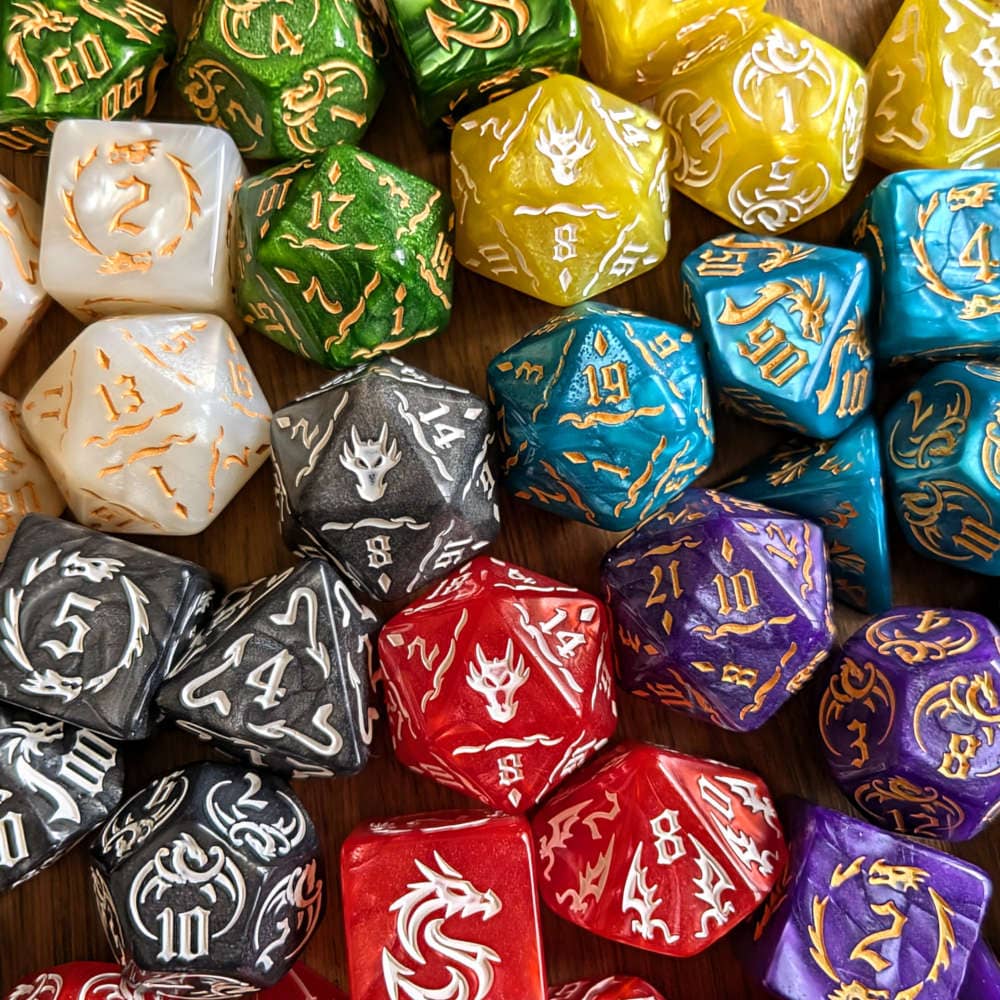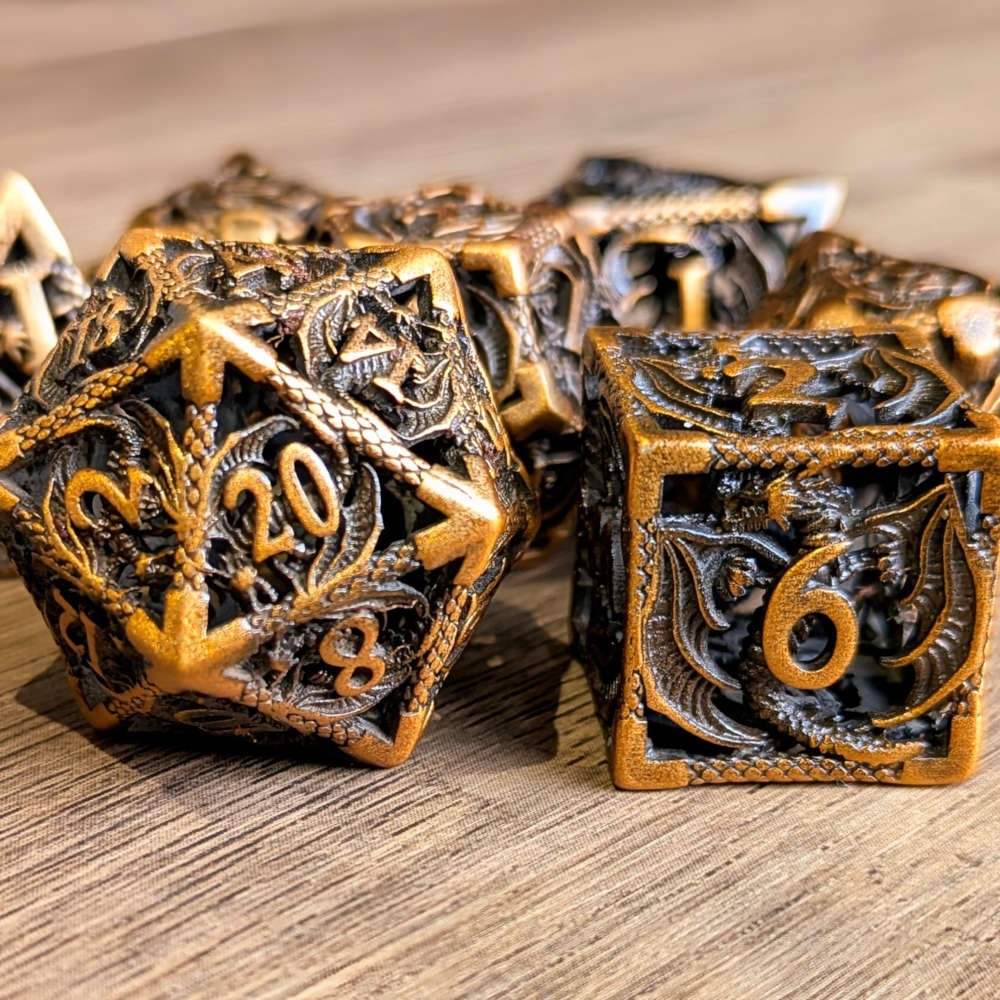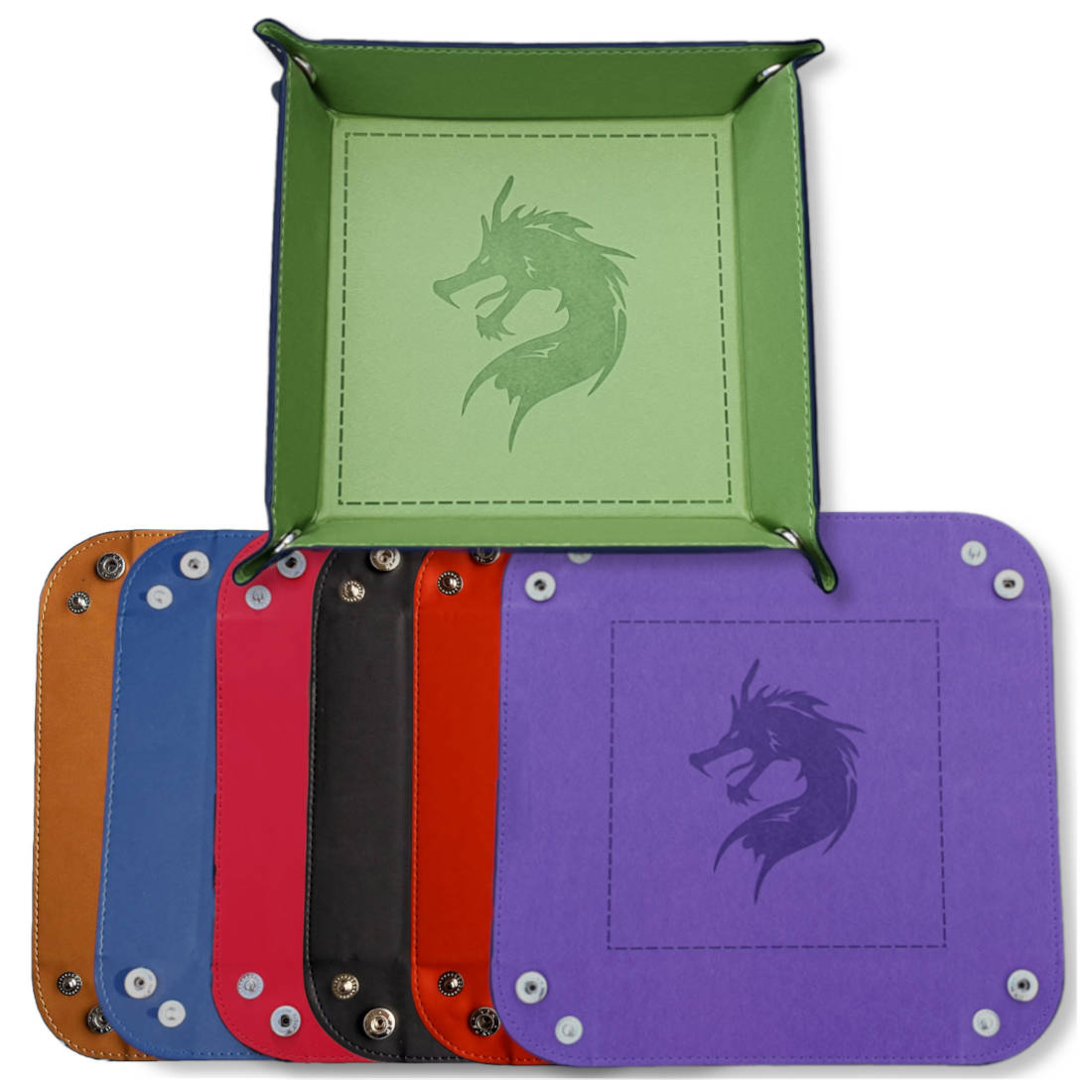How to explore romance in D&D

Embarking on a journey of love and romance can add another layer to your D&D campaign. We’re not talking about romance between people here - we’re talking about romance between player characters (PCs) and non-player characters (NPCs)! Naturally, it can be tricky to know the correct way to go about this so you ensure everyone at the table is comfortable and their boundaries respected.
In this guide, we’ll explore how romance can pan out in games of D&D, some reasons you might consider including it in your games, and methods learned from real experience to ensure everyone is comfortable should you decide to incorporate it. Then, for fun, we’ll go into an example of how a romance story between two PCs helped add a layer of intrigue to one of our games.
Is there romance in Dungeons and Dragons?
Indeed, romance in D&D is synonymous with people humorously rolling to seduce! Jokes aside, it's crucial for Dungeon Masters to discuss such themes with their players and establish an approach that respects everyone's comfort levels and boundaries. With this flexibility, groups can collaboratively weave romantic tales into their campaigns if they choose to.
Types of in-game romance
There are three ways romance could play out in a tabletop game:
- NPC-NPC romance: romantic narratives or relationships between two non-player characters can give them extra depth or contribute to overarching storytelling. These are the easiest to manage because the Dungeon Master (DM) can control how prominent the relationship is and how it affects the party and wider story.
- PC-NPC romance: a romance between a player character and non-player character. These can add layers of complexity to party decision making. DMs should ensure the narrative respects not just the player involved but all players at the table, and aligns with the character’s background and motivations.
- PC-PC romance: a romantic connection between two player characters. DMs should approach this with sensitivity, acknowledging the potential impact on the players involved and the overall party dynamics. However, when done right, this can add depth to the narrative and spawn interesting roleplay moments that might not otherwise have occurred.
Why include romance in your tabletop games?
There’s lots of different reasons why people consider adding romance to their games. We’ve condensed this into the main three:
1. Source of character development
Romantic relationships add layers to a character's personality, motivations, and backstory, allowing players to explore different facets of their roles. It provides an opportunity for characters to grow, face challenges, and make choices that contribute to their overall development. Dungeon Masters can use romance as a narrative tool to delve into a character's past, present, and future, creating a more immersive and dynamic gaming experience.
2. Provokes roleplay moments
Romance can provoke roleplay moments, fostering a deeper connection between characters and players. Engaging in romantic interactions allows players to explore emotions, build interpersonal relationships, and respond authentically to in-game situations. These moments of vulnerability and connection can lead to memorable roleplaying experiences, encouraging players to invest emotionally in their characters and the unfolding story.
If you’re unsure on matters of roleplay, check out our guide that explores ways you can roleplay better in D&D.
3. Contributes to the overarching story
Romance can be a significant contributor to the overarching story of a tabletop game. Whether it's an epic love story or a dramatic romantic subplot, these elements can shape the trajectory of the campaign.
Dungeon Masters can use romantic narratives to weave additional layers into the main plot, creating twists, turns, and dilemmas that engage the players and get them more immersed.
Common pitfalls of in-game romance
- Overstepping boundaries: DMs must be mindful of the comfort levels of their players and establish clear lines regarding the content and themes involved. This is best done during a session zero, as straying into adult content or addressing sensitive topics without prior discussion can lead to discomfort or conflict at the gaming table. Effective communication between DM and players is crucial to ensure that everyone feels respected and safe during romantic narratives.
- Overshadowing PCs: if a romantic storyline becomes too dominant, it may draw focus away from other aspects of the campaign, leaving non-involved players feeling left out or disengaged. DMs should strike a balance, ensuring that romantic narratives enhance the overall story rather than overshadowing the main story and other player characters.
- Stripping PCs of agency: another potential issue is the unintentional stripping of player characters' agency within romantic narratives. DMs should be cautious not to force romantic situations onto PCs or dictate how their characters feel. Instead, the emphasis should be on providing opportunities for players to express their characters' emotions and choices organically.
How to ensure everyone is comfortable
- Establish boundaries at session 0: this is a fundamental step in ensuring everyone is comfortable with the inclusion of romance in the campaign. DMs should initiate an open discussion with players, addressing potential themes, content, and the level of detail they are comfortable exploring in romantic storylines. Our session zero guide and checklist will help you navigate this key step.
- Be prepared to ‘fade to black’: to maintain a comfortable atmosphere, DMs can use this technique during potentially uncomfortable moments. When a romantic encounter reaches a point where players may feel uneasy or when details are better left to the imagination, the DM can gracefully ‘fade to black’ before transitioning to another scene, preserving the narrative without crossing anyone’s boundaries.
- Check in with players: periodic check-ins with players throughout the campaign are essential. DMs should assess how players are feeling about the ongoing romantic narratives, ensuring that everyone remains comfortable and engaged. Frequently asking for feedback as a Dungeon Master allows for adjustments to be made if any player expresses discomfort or desires a shift in the narrative direction.
- Allow a way to opt-out: players should always have the option to opt out of romantic storylines if they feel that they no longer want to explore that part of the game. DMs should make it clear that players can communicate their discomfort or disinterest at any point, and the narrative can be adjusted accordingly. Respecting player autonomy and choices is crucial in creating a positive and inclusive gaming environment and helps you become a better DM.
- Utilising the narrative, not dice rolls: when navigating romantic scenarios, avoid relying on dice rolls to determine outcomes. Romance is better handled through roleplay and narrative decisions rather than reduced to chance with dice. This approach allows players to actively participate in shaping the romantic aspects of their characters' stories, fostering a more engaging and player-driven experience.
Exploring romance between PCs
When exploring romance between player characters, clarity on your expectations and objectives is paramount. Begin by asking yourself what you hope to achieve with this narrative element. Understanding your intentions will aid in improvising reactions and weaving a compelling story. So, if you're looking to explore romance as a way of character development and playing an interesting D&D character, then be open and honest and discuss that with your group.
It's also crucial to approach in-game romance with the awareness that D&D isn't a platform for personal romantic exploration. These conversations are best had above the gaming table.
While romantic relationships between PCs can introduce captivating dynamics to the narrative, it's essential to consider potential complications if the in-game relationship faces challenges or dissolves. Communicate openly with the players involved to ensure everyone remains comfortable and engaged as the romantic storyline unfolds. Checking in periodically will help address any concerns and maintain a positive gaming atmosphere.
As the Dungeon Master, provide opportunities for relationship-building interactions at appropriate points in the story, such as during downtime or encounter-free travel. However, striking a balance is crucial - be mindful of accidently letting the romantic subplot overshadow the broader narrative. Unless you’re playing solo D&D or are playing D&D with two people and that’s your goal.
Finally, exercise caution when delving into adult themes, ensuring that all players, through a thorough session 0 discussion, are comfortable with the inclusion and roleplaying of romantic elements in the game.
An example of in-game romance in action
In one of my own campaigns, the narrative took a turn as two player characters, Orianna, a tiefling wizardess, and Desmoiran, an orc barbarian, found themselves entangled in a budding romance. This delightful subplot unfolded during our campaign of Shadow of the Dragon Queen when the two characters crossed paths on their journey to attend the funeral of Ipsin Greenshield.

In our session zero, we established clear boundaries with everyone at the table which allowed us to explore in-game romance in this way.
The development of their relationship produced captivating character moments during downtime, such as Desmoiran's struggle with reading. In the quiet nights by the campfire, Orianna would patiently guide his hand over the pages of her spellbook, reading aloud and discussing the intricate spells within.
This example highlights the beauty of in-game romance when approached with care and consideration. These romantic interludes not only enriched the characters' stories but also added a layer of depth to the overall narrative, showcasing how well-handled in-game relationships can enhance the tabletop gaming experience.
Dreamy dice sets and accessories
Exploring romance in Dungeons and Dragons can add a layer of complexity and intrigue to your adventures. If you found this article intriguing, dive into our guide on why taking notes is a crucial in your D&D adventures.
As you embark on your fantasy quests, why not elevate your experience with our range of TTRPG dice sets? Our collection includes the mesmerising Dragon Eye Dice, designed to captivate the eyes and spark conversations at your gaming table.





